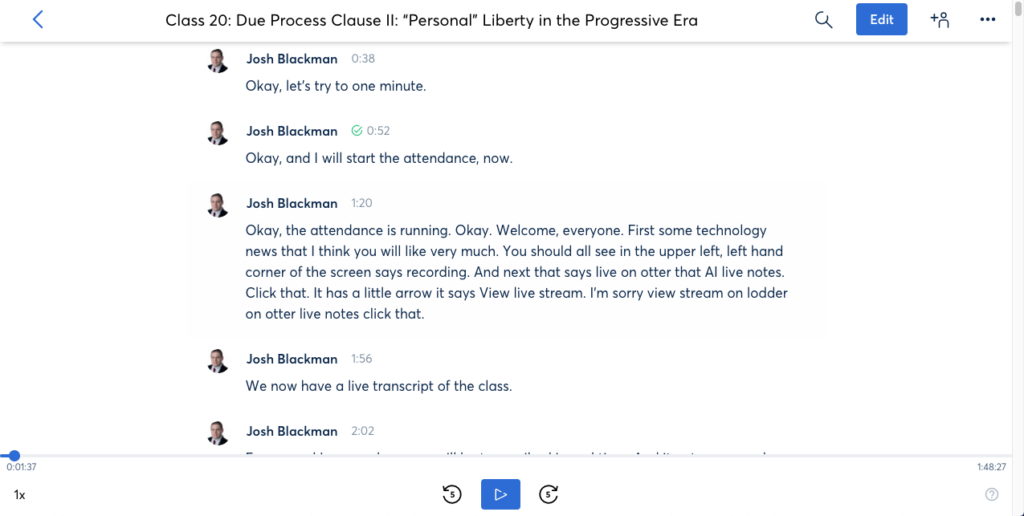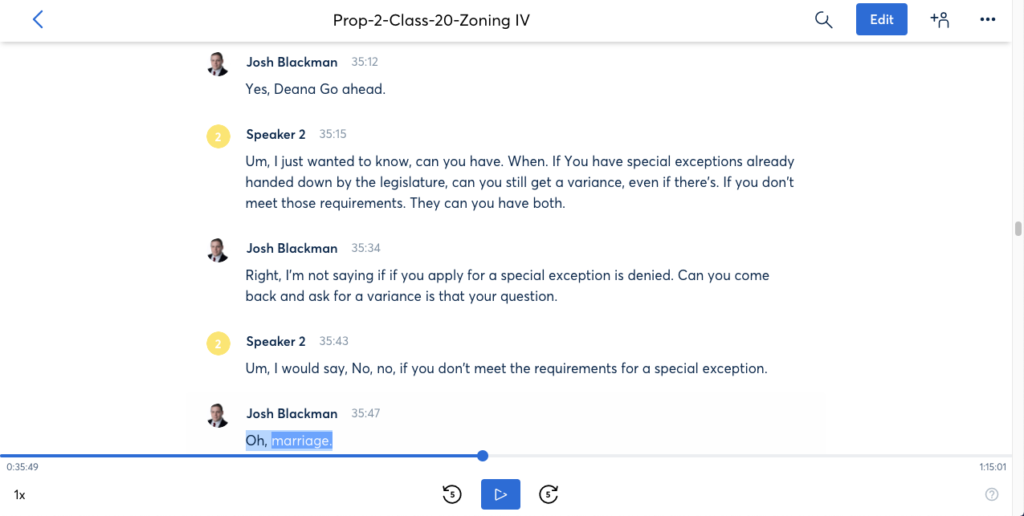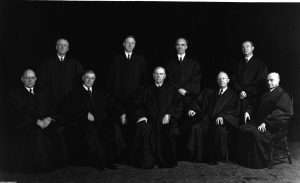
Data released Thursday morning show that the U.S. economy has experienced record-breaking growth during the past three months, but also reveal that the country has a long way to go to get out of the hole created by the COVID-19 pandemic.
The Department of Commerce’s preliminary estimate of third-quarter gross domestic product growth, the last major economic report to be released before the presidential election on Nov. 3, estimates that the economy grew by 33.1 percent from July through September. That comes after a stunning 31.4 percent contraction in the previous three months—during which much of the country was paralyzed by coronavirus-related economic shutdowns.
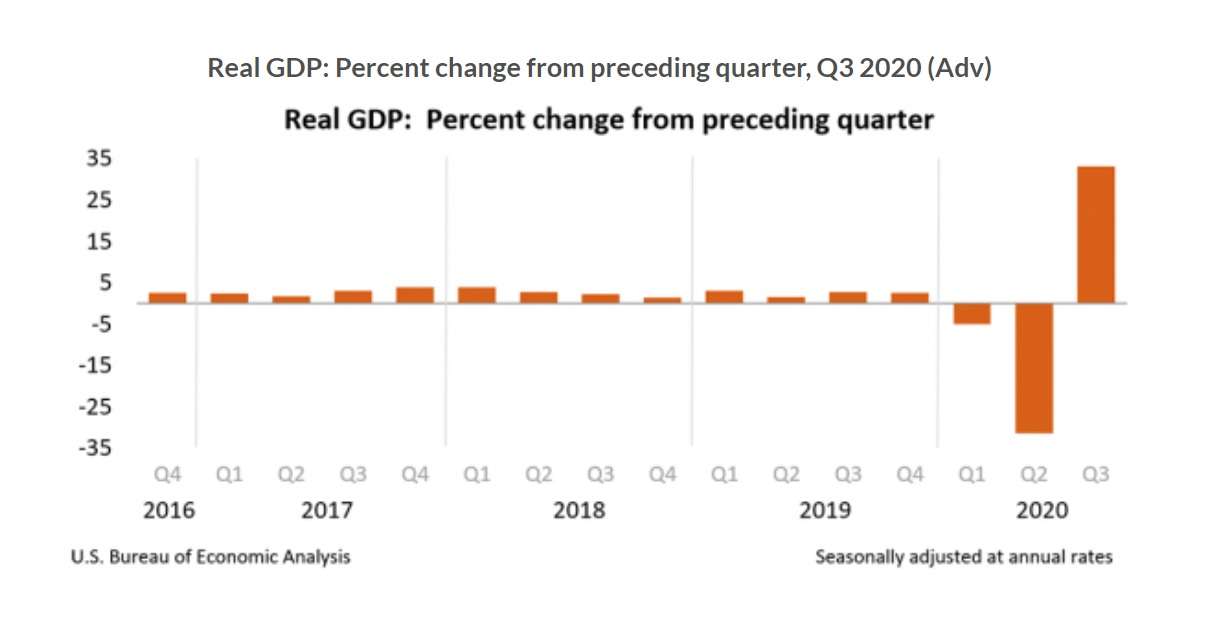
Both those figures are a bit misleading. Because the federal government reports GDP figures in “annualized” terms, outlier quarterly numbers end up being exaggerated. “What actually happened was that activity in April–June was 9% lower than in January–March, which in turn was about 1% lower than in October–December of 2019,” explains Barron’s. “To be clear, the coronavirus contraction was catastrophic and without precedent in its combination of speed or severity. But it wasn’t equivalent to losing a third of the economy for months at a time.”
The same thing is happening in reverse now. There’s no doubt that the economy has bounced back as lockdowns have lifted and businesses have reopened in recent months, but the data does not indicate a full recovery.
Economists for JPMorgan, an investment bank, note that the economy remains about 3 percent smaller than it was at the end of last year. And while the unemployment rate is falling after hitting a peak of 14.7 percent earlier this year, there are millions of Americans still out of work due to the pandemic.
Important to keep in mind for this morning’s GDP release … even if Q3 bounce matches estimates, we’ll still be down 4% from end of 2019 … for context, even at lowest level, GDP only sank by 3.98% at depths of GFC @biancoresearch @bloomberg @USCBO @CommerceGov pic.twitter.com/VSUUSwpaLO
— Liz Ann Sonders (@LizAnnSonders) October 29, 2020
Thursday’s report will serve as fodder for both President Donald Trump and former Vice President Joe Biden as they make their closing pitches to voters in the presidential campaign’s final week.
Trump has been talking for weeks about “turning the corner” in the fight against COVID-19, and will likely use Thursday’s grandiose topline number to press that case. Biden will be able to point to the fact that, even after such a strong quarter of growth, the economy remains smaller than it was earlier this year.
And with COVID-19 cases and hospitalizations on the rise—as well as renewed lockdowns taking place in Europe and some U.S. states—it is clear that the pandemic is not yet done wreaking havoc with the economy. Thursday’s data release contains undeniably good news, but we’re not out of the woods yet.
FREE MINDS
Kevin D. Williamson, National Review‘s libertarian-sympathizing curmudgeon, interrogates the case for reelecting Trump and finds it wanting. The best parts of the Trump administration, for conservatives, have been the things the president has had the least to do with, he argues:
Trump’s principal success has been as a rubber stamp to the very “establishment” at which Trump and his admirers like to sneer. In the matter of judges, that establishment is instantiated by the Heritage Foundation — which simply gave Trump a list of good judicial candidates, while Trump, always happy to let someone else do his homework for him, has stuck with it. …
Trump signed off on a tax plan that has some good elements, but the so-called Trump tax cuts were largely the work of Mr. Establishment, Paul Ryan — and they ran contrary to the personal preferences and rhetoric of the president, who spent much of the campaign bellyaching about Wall Street fat cats not paying as much in taxes as he thinks they should. Trump’s regulatory reform efforts have been designed and implemented by Bushies such as Neomi Rao (now a federal judge) and her former deputies.
Which is to say, the Trump administration has succeeded most where Trump has the least to do with it. The nat-pops may turn up their noses at “Conservative Inc.” but that is who has delivered such benefits as we have received from the Trump administration. All Peter Navarro and the rest of those crackpots has done is bankrupt a lot of farmers and drive up the expenses of beer brewers and manufacturers.
Patriotism, Williamson concludes, means not merely voting for “one pack of jackals because it looks a little less hungry and vicious than the other pack of jackals,” but demanding “that the free and self-governing men and women of this struggling republic deserve better than what is on offer.”
FREE MARKETS
Days after winning the 2016 election, the president-elect persuaded air conditioning manufacturer Carrier not to close an Indiana plant. This was made possible by $7 million in state-level subsidies.
Four years later, how are things working out? The Washington Post takes a look:
This year alone, Indiana employers have sent more jobs to Mexico, China, India and other foreign countries than were saved at Carrier. Without headlines or presidential notice, at least 17 companies — names like Vibracoustic, Molnlycke Health Care, Allura, Altex, Stanley Black & Decker, Dometic, Johnson Controls and Horizon Terra — have closed plants or otherwise reduced employment in Indiana and moved jobs abroad, according to U.S. Department of Labor filings.
As I wrote back in January 2017, it wasn’t a lack of presidential attention that was driving Carrier to relocate jobs to other countries—it was onerous and expensive regulations. “Those same regulations could push other companies to do the same—the ‘deal’ that saved those 1,000 [Carrier] jobs in Indianapolis did nothing to make life easier for other, similar businesses.” Indeed, it seems they have.
ELECTION 2020
Are dead people going to swing the election by voting with mail-in ballots? Probably not.
Our new paper uses administrative data from WA to evaluate the popular claim that dead people’s ballots are fraudulently cast at high rates in vote-by-mail elections. We find that this type of fraud is extremely rare (thread)https://t.co/GBW6hKUhkM pic.twitter.com/P3O505ywhY
— Andy Hall (@andrewbhall) October 27, 2020
QUICK HITS
- Wednesday’s Senate hearing with the heads of Facebook, Google, and Twitter was a predictable disaster, as lawmakers pursued petty grievances and inconsistent criticisms of the platforms.
- Colorado, Idaho, Massachusetts, and Texas are imposing new restrictions on schools and businesses as well as limiting the size of public gatherings.
- United Airlines will debut in-flight coronavirus testing for international flights between Newark and London.
- Miles Taylor is no longer anonymous.
- The Girl Scouts of America tweeted—and then quickly deleted—a supposedly anodyne statement congratulating Amy Coney Barrett on her Supreme Court confirmation. Of course, now right-wingers want to cancel the Girl Scouts for caving to silly left-wing criticism of an inoffensive tweet, because there is no bottom to the ridiculousness of the culture wars.
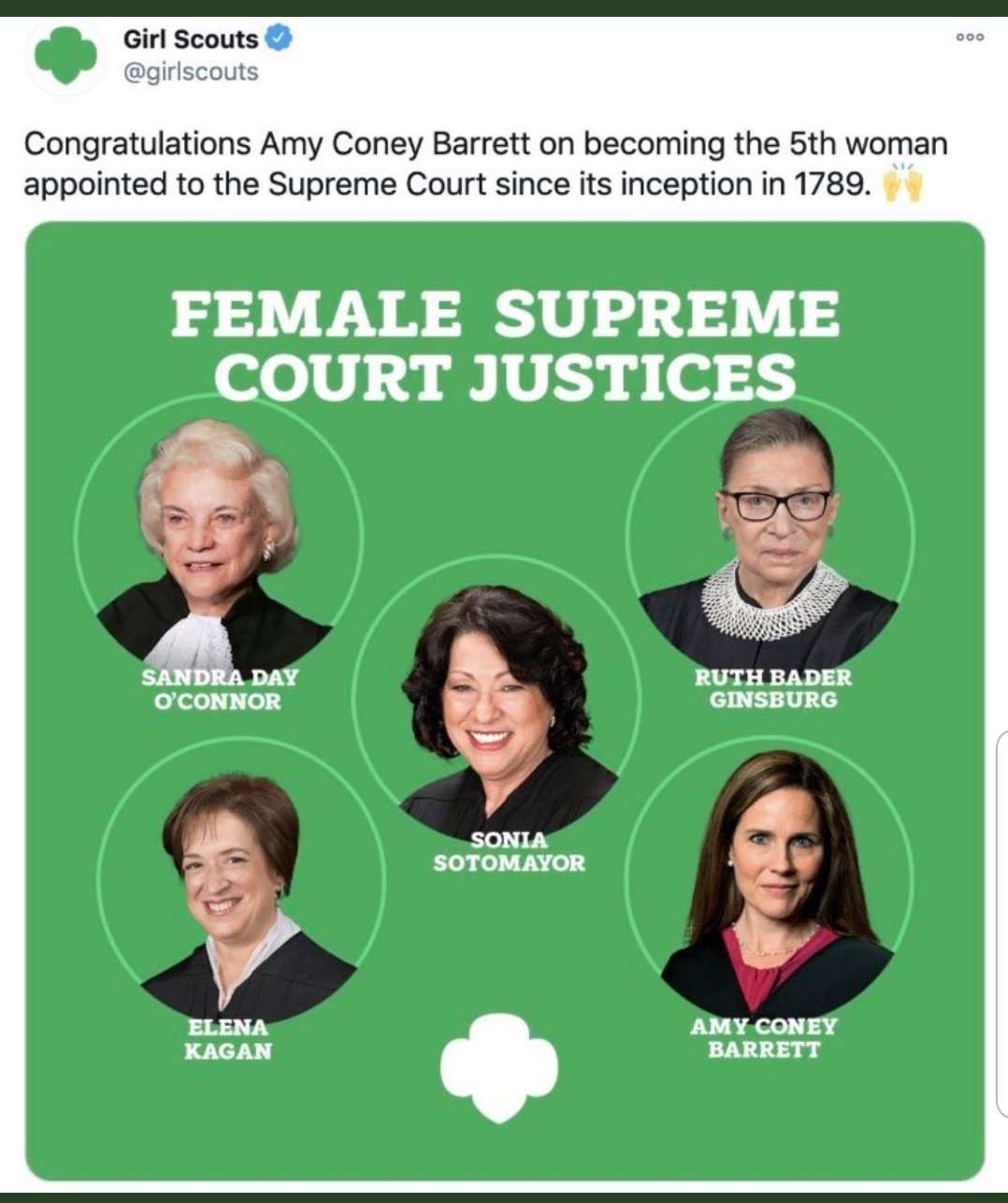
- What if Russia had beaten America to the Moon? Ronald D. Moore, the creator of the mid-2000s Battlestar Galactica reboot, has a new show exploring that reality.
- Super Bowl winning defensive end Russell Okung gets it:
The more you educate your self about liberty, sound money, free society and limited government the more you understand how the world truly works.
— russ (@RussellOkung) October 28, 2020
from Latest – Reason.com https://ift.tt/2GcREEs
via IFTTT

